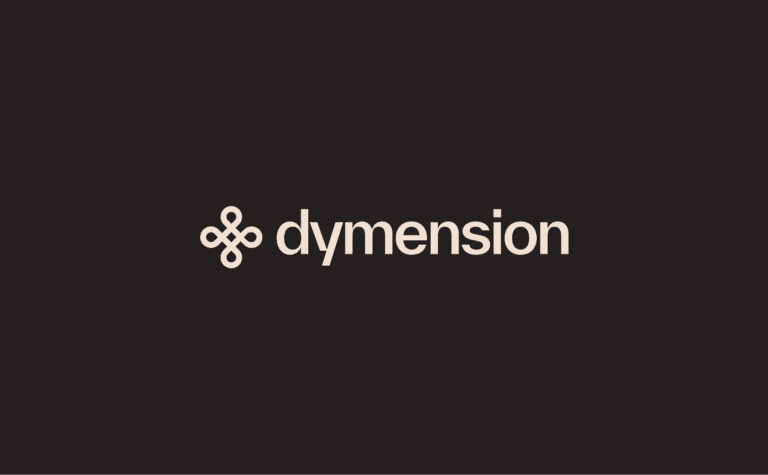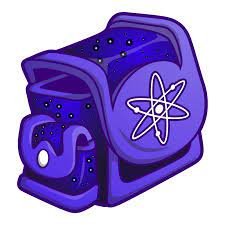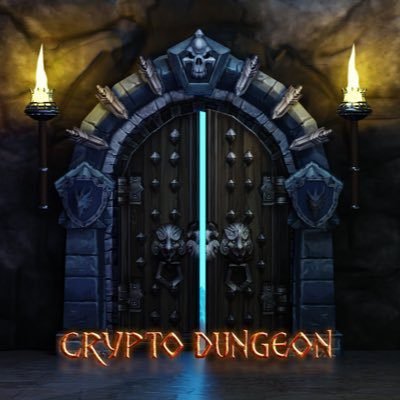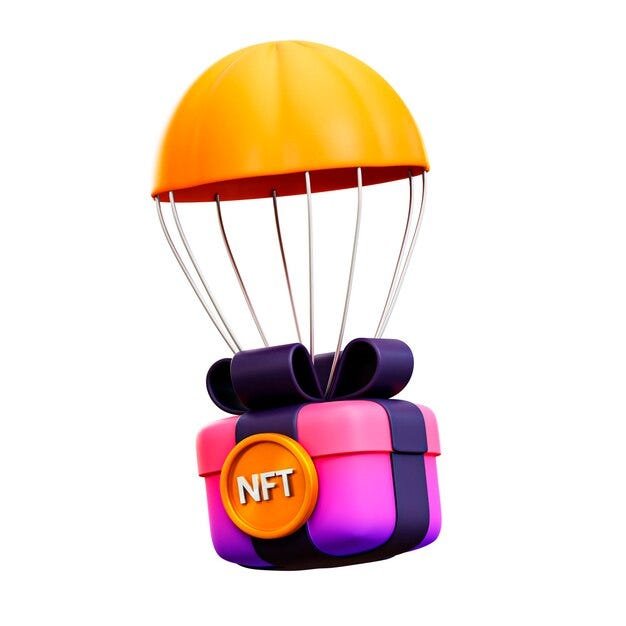Cosmos Network is a blockchain network and ecosystem designed to address some of the key challenges and limitations faced by existing blockchain platforms. It was created to enable greater interoperability, scalability, and usability across different blockchains. Here’s a comprehensive overview of Cosmos:
1. The Vision: Cosmos was conceived with the vision of creating an “Internet of Blockchains.” In other words, it aims to create a network of interconnected blockchains, allowing them to communicate and transfer value seamlessly.
2. Interoperability: One of Cosmos’s primary goals is to solve the problem of blockchain interoperability. It accomplishes this through its Inter-Blockchain Communication (IBC) protocol, which enables different blockchains to communicate and exchange data and assets. This interoperability opens up a wide range of possibilities, such as cross-chain token transfers and communication between decentralized applications (dApps) on different chains.
3. Hub-and-Zone Architecture: Cosmos utilizes a unique hub-and-zone architecture. The Cosmos Hub serves as the central blockchain in the network, connecting to various other blockchains known as “zones.” Each zone can have its consensus mechanism, token, and governance, making it highly customizable.
4. Tendermint Consensus: Tendermint is the consensus algorithm that underlies many Cosmos blockchains. It’s a Byzantine Fault Tolerant (BFT) consensus mechanism known for its security and scalability. Tendermint ensures fast and final block confirmation, making it suitable for applications that require high-throughput and low latency.
5. Cosmos SDK: The Cosmos Software Development Kit (SDK) is a critical component that empowers developers to build their customized blockchains and applications on the Cosmos network. It abstracts many of the complexities of blockchain development, making it easier for developers to create their blockchain solutions.
6. ATOM (Cosmos Atom): ATOM is the native cryptocurrency of the Cosmos network. It plays a central role in the network’s governance and security. Holders of ATOM tokens can stake them to secure the network and participate in on-chain governance decisions.
7. Real-World Use Cases: Cosmos has found applications in various industries, including decentralized finance (DeFi), supply chain management, gaming, and more. Its ability to facilitate interoperability and customization makes it attractive for a wide range of use cases.
8. Security and Governance: Cosmos emphasizes security and on-chain governance. The network allows token holders to vote on proposals and updates, ensuring a decentralized and community-driven decision-making process.
9. Ecosystem: The Cosmos ecosystem includes a vibrant community of developers, validators, and projects. It has a growing list of blockchains and applications built on its framework.
10. Resources: Cosmos provides extensive documentation, developer tools, forums, and grants to support its ecosystem’s growth and development.
In summary, Cosmos is a blockchain network that prioritizes interoperability, scalability, and developer-friendliness. It aims to create a decentralized internet of blockchains where different blockchains can communicate and interact seamlessly. With its unique architecture, consensus algorithm, and development tools, Cosmos has gained recognition in the blockchain and crypto space as a powerful platform for creating customizable and interconnected blockchain solutions.
Learn more about other blockchain networks here.
Other resources:
- Cosmos Network Website: Start with the official Cosmos Network website at https://cosmos.network/. It provides a wealth of information about the network, its technology, and its various projects.
- Cosmos Documentation: For in-depth technical information, explore the official documentation at https://docs.cosmos.network/. This is a valuable resource for builders who want to understand the inner workings of the network.
- Cosmos Blog: Keep up with the latest news and updates on the Cosmos blog at https://blog.cosmos.network/. This will help you stay informed about network upgrades and developments.
- Cosmos Forums: Engage with the Cosmos community and ask questions on the official forums at https://forum.cosmos.network/. It’s a great place to connect with other enthusiasts and developers.
- Cosmos Reddit: The Cosmos subreddit at https://www.reddit.com/r/cosmosnetwork/ is another active community where you can find discussions, news, and insights from fellow Cosmos enthusiasts.
- Cosmos Twitter: Follow the official Cosmos Network Twitter account at https://twitter.com/cosmos for real-time updates, announcements, and community discussions.
- Cosmos YouTube Channel: Explore the Cosmos YouTube channel at https://www.youtube.com/c/CosmosNetwork for video tutorials, interviews, and educational content.
- Cosmos GitHub: If you’re interested in the technical side, check out the Cosmos GitHub repository at https://github.com/cosmos to access the open-source codebase and developer tools.
- Cosmos Validators: Learn about the validators securing the Cosmos Network and their performance on websites like https://www.mintscan.io/ or https://www.mintscan.io/cosmos/validators.
About Course
Course Curriculum
Introduction to Blockchain and Cosmos
his introductory section sets the stage for the course, providing participants with essential foundational knowledge about blockchain technology and an initial glimpse into the Cosmos network. It serves as the stepping stone for understanding the broader concepts and principles covered throughout the course.
The Emergence of Cosmos
This segment provides an insightful historical perspective on the inception of Cosmos, a groundbreaking blockchain project. It encompasses the founders' vision, the growing need for blockchain interoperability, and how Cosmos was conceived as the solution to the pressing issue of blockchain fragmentation. Participants will gain a deeper understanding of the origins and significance of the Cosmos Network within the broader blockchain landscape.
-
00:00
-
00:00
-
00:00
Cosmos SDK
The Cosmos Software Development Kit (SDK) is a fundamental component within the Cosmos network, enabling the creation of tailored blockchains and decentralized applications (dApps). This topic provides an in-depth understanding of the Cosmos SDK, its features, benefits, and practical applications.
Key Points:
Cosmos SDK Overview:
The Cosmos SDK is an open-source framework designed for building application-specific blockchains.
It simplifies blockchain development by offering modular components and tools, abstracting complex tasks.
Key Features and Components:
The SDK's modularity allows developers to select and customize blockchain features.
Customization options include consensus algorithms, governance models, and economic parameters.
Tendermint consensus is often used with the Cosmos SDK, providing security and fast block finality.
Benefits of Using the Cosmos SDK:
Rapid Development: Developers can create custom blockchains more quickly and efficiently.
Interoperability: Blockchains built with the SDK can seamlessly communicate within the Cosmos ecosystem via the IBC protocol.
Developer-Friendly: The SDK abstracts low-level blockchain development tasks, making it accessible to a broader developer audience.
Use Cases:
The Cosmos SDK is suitable for building custom blockchains for specific industries, dApps, and cross-chain asset transfers.
Steps for Building with the Cosmos SDK:
Define blockchain parameters.
Select and configure modules.
Develop smart contracts and dApps.
Test and deploy the blockchain.
Engage with the Cosmos community and validators for support.
Resources for Cosmos SDK Development:
Cosmos SDK documentation provides extensive guides and tutorials.
Sample applications and code snippets help jumpstart projects.
Developer communities and forums offer collaboration and assistance.
Examples of Blockchains Built with the Cosmos SDK:
The Cosmos Hub, the central blockchain of the Cosmos network, is constructed using the Cosmos SDK.
Binance Smart Chain (BSC) is another prominent blockchain built with the Cosmos SDK, known for its DeFi applications.
Understanding the Cosmos SDK is vital for developers, blockchain enthusiasts, and entrepreneurs looking to leverage the Cosmos ecosystem for creating custom blockchains and innovative decentralized applications. Its modularity, interoperability, and developer-friendly features make it a valuable tool for blockchain innovation within the Cosmos network.
Blockchain Interoperability with IBC
Inter-Blockchain Communication (IBC) is a fundamental protocol within the Cosmos ecosystem that enables interoperability between different blockchains. It allows these blockchains to communicate, exchange data, and transfer assets in a secure and trustless manner.
Real-World Use Cases
Inter-Blockchain Communication (IBC) is a groundbreaking protocol within the Cosmos ecosystem that empowers different blockchains to communicate and exchange data seamlessly. This topic delves into real-world applications and use cases where IBC plays a transformative role:
Key Points:
Cross-Chain Asset Transfers:
IBC enables users to transfer tokens and assets effortlessly between different blockchains, fostering liquidity and interoperability within the Cosmos network.
Decentralized Finance (DeFi):
IBC facilitates multi-asset yield farming, cross-chain lending and borrowing, and other DeFi activities, expanding the capabilities and opportunities within the DeFi space.
Supply Chain Management:
Cross-chain data sharing powered by IBC ensures transparency and traceability across different stages of supply chains, enhancing efficiency and trust.
Gaming and NFTs:
Cross-chain NFT marketplaces and interconnected gaming ecosystems are made possible by IBC, offering gamers and collectors more diverse and dynamic experiences.
Decentralized Identity:
IBC supports cross-chain identity verification, allowing users to utilize their verified identity on various blockchains for secure and convenient authentication.
Multi-Chain Oracles:
Oracles that provide real-world data to smart contracts can use IBC to access data from multiple sources and deliver it to various blockchains, enhancing the accuracy of blockchain-based applications.
Cross-Chain Governance:
Unified governance proposals can be introduced, enabling token holders to vote on changes and improvements that impact multiple interconnected blockchains, fostering cooperative decision-making.
These real-world use cases underscore the significance of IBC in fostering an interconnected blockchain ecosystem. IBC's ability to facilitate secure cross-chain asset transfers, data sharing, and collaboration opens doors to innovation across industries and positions it as a key driver of blockchain's evolution. As more projects and applications leverage the power of IBC, the potential for transformative change in various sectors becomes increasingly evident.
Development Tools and Practices in the Cosmos Ecosystem
Development tools and practices are pivotal in building and maintaining a robust blockchain ecosystem like Cosmos. This summary provides an overview of the essential tools and practices that enable the development, deployment, and management of blockchain projects within the Cosmos network:
1. Cosmos SDK:
The Cosmos Software Development Kit (SDK) is the cornerstone of blockchain development within the Cosmos ecosystem. It empowers developers to create custom blockchains tailored to specific use cases.
2. Tendermint Consensus:
Tendermint is a Byzantine fault-tolerant consensus algorithm used by many Cosmos blockchains. It ensures the security and finality of transactions, enhancing the reliability of blockchain networks.
3. Inter-Blockchain Communication (IBC) Protocol:
IBC enables secure and decentralized interoperability between different blockchains within the Cosmos network. It plays a crucial role in enabling cross-chain data and asset transfers.
4. Development Frameworks:
Cosmos offers various development frameworks and libraries to streamline blockchain development. These tools accelerate the creation of smart contracts, decentralized applications (dApps), and custom blockchains.
5. Node Operation and Validation:
Node operators play a critical role in the Cosmos ecosystem. They run validator nodes, validate transactions, and secure the network. Learning best practices for node operation is vital for network stability.
6. Smart Contract Development:
Developers can create smart contracts on Cosmos blockchains to automate processes and build decentralized applications. Understanding the Cosmos smart contract ecosystem is essential for dApp development.
7. Security Best Practices:
Security is paramount in blockchain development. Developers must follow best practices for secure coding, contract auditing, and network protection to prevent vulnerabilities and attacks.
8. Governance Participation:
On-chain governance is a key feature of Cosmos blockchains. Developers, validators, and token holders actively participate in governance proposals to shape the network's future.
9. Documentation and Resources:
Cosmos offers comprehensive documentation, forums, and educational resources for developers to learn, troubleshoot, and stay updated on the latest developments within the ecosystem.
10. Community Engagement:
Active engagement with the Cosmos community fosters collaboration, knowledge sharing, and support. Developers can seek assistance, contribute to open-source projects, and participate in hackathons to further ecosystem growth.
11. Integration and Use Cases:
Developers explore integration opportunities with other blockchain networks and real-world use cases across industries such as finance, supply chain, gaming, and more.
12. Testing and Debugging:
Robust testing and debugging practices are crucial to ensure the reliability and security of blockchain applications. Developers use testnets and debugging tools to identify and resolve issues.
In summary, the Cosmos ecosystem offers a rich set of development tools, best practices, and resources to empower blockchain developers and enthusiasts. These tools and practices enable the creation of custom blockchains, dApps, and innovative solutions while prioritizing security, scalability, and interoperability. Engaging with the Cosmos community and staying informed about the latest developments are keys to thriving in this dynamic ecosystem.
-
00:00
-
00:00
ATOM (Cosmos Atom) – The Native Cryptocurrency of the Cosmos Network
ATOM, often referred to as "Cosmos Atom," is the native cryptocurrency of the Cosmos network, a groundbreaking blockchain ecosystem designed for interoperability and scalability. This topic provides an overview of ATOM, its role within the Cosmos network, and its significance in the broader blockchain and cryptocurrency landscape:
Key Points:
Cosmos Network Backbone:
ATOM serves as the native cryptocurrency that powers the Cosmos network, acting as the backbone of the ecosystem. It plays a central role in facilitating transactions, securing the network, and participating in governance.
Staking and Security:
ATOM holders have the option to stake their tokens as validators or delegators. Staked tokens contribute to the security and consensus mechanism of the network, known as Tendermint, while earning stakers rewards in the form of additional ATOM tokens.
Governance Participation:
ATOM holders participate in on-chain governance by voting on proposals that impact the Cosmos network. Governance proposals can include protocol upgrades, changes to network parameters, and funding for ecosystem projects.
Interoperability and IBC:
ATOM plays a crucial role in facilitating cross-chain interoperability within the Cosmos ecosystem, thanks to the Inter-Blockchain Communication (IBC) protocol. This enables the transfer of assets and data between different blockchains, enhancing the ecosystem's utility.
Ecosystem Development:
ATOM tokens are used to support various projects and initiatives within the Cosmos ecosystem. This includes funding development, research, and community-driven projects through mechanisms like the Cosmos Community Grants program.
Liquidity and Trading:
ATOM is actively traded on various cryptocurrency exchanges, making it accessible to a wide range of users and investors. Its liquidity and trading pairs allow it to be used for various financial activities within and outside the Cosmos network.
Utility and Use Cases:
ATOM's utility extends beyond transactions and governance. It can be used within decentralized applications (dApps) and DeFi platforms built on Cosmos, making it a versatile asset with diverse use cases.
Growing Ecosystem:
The Cosmos ecosystem continues to expand, with numerous projects and applications leveraging ATOM and the network's capabilities to innovate and solve real-world problems. This growth reflects ATOM's significance in the blockchain industry.
ATOM, as the native cryptocurrency of the Cosmos network, plays a pivotal role in supporting the network's security, interoperability, governance, and overall growth. Its use extends across various aspects of the Cosmos ecosystem, making it a key asset in the broader blockchain revolution.
Student Ratings & Reviews






